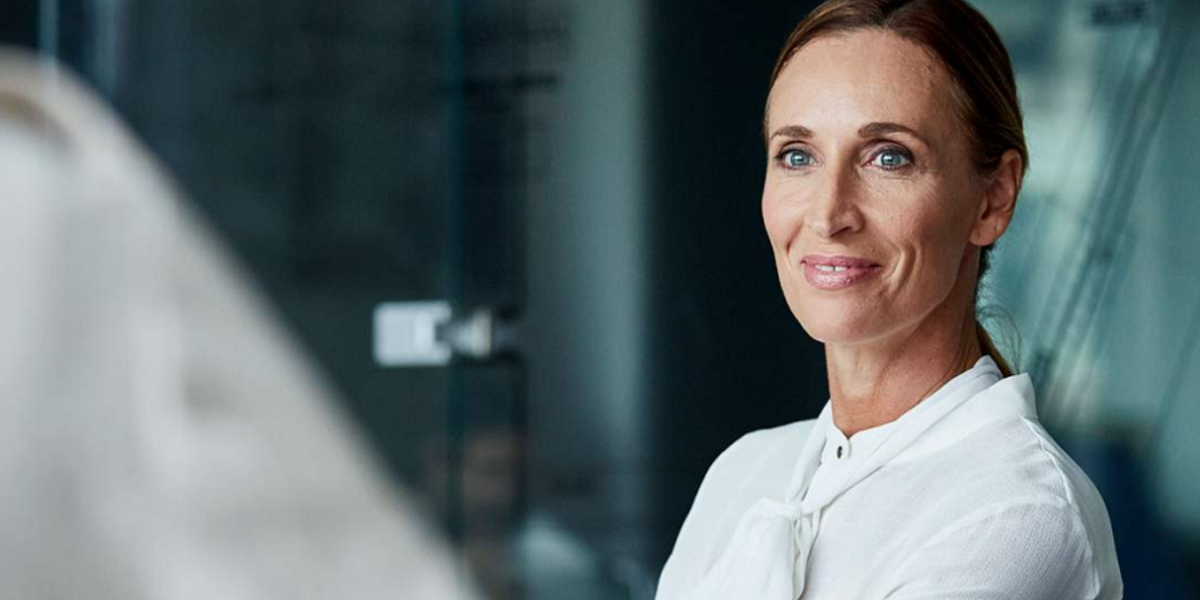-

Gender diversity is good for business
The 2019 edition of the CS Gender 3000 reportlooks at the link between gender diversity and superior company performance and how this is evolving over time.To drive real change business, investors, policy makers and other stakeholders need access to quality data. That's exactly what the Credit Suisse Research Institute is contributing to the discussion on gender diversity in business. The CS Gender 3000 report provides unique research on the gender diversity mix within the governance and executive leadership teams of over 3,000 companies across 56 countries.While the research has traditionally been on the impact of increasing the number of women on boards, additional factors are now in focus. For example, the impact of women in senior management where executive teams are driving the day-to-day business and ultimately profitability.Family owned companiesThe 2019 report looks in detail at gender diversity and family owned companies. It shows how family owned companies, with at least 10% women executives, have out-performed male only companies by around 410 basis points per year since 2014. Aligning career and familyWe know aligning career and family can be challenging. The research continues to show that having children can negatively impact a woman's career and earnings power. Is this something business can tackle alone or do these socioeconomic challenges need a macro perspective and collaboration that includes government?The gender pay gapFrom the Gender 3000 companies we see that men earn more than women in all regions and the gender pay gap is a result of well-established differences in gender representation by occupation. What will it take to close the gap? We say, to drive meaningful change, it needs policy makers and employers to play a role in challenging the status quo and improving the socioeconomic framework.Good progress for women, but still a way to goGender diversity in the boardroom has doubled during the decade to over 20%, a clear positive for governance. Additionally, the proportion of women in management has risen to 17% from 14% in the 2016 study. Regionally, North America (21%) and APAC (19%) reflect greater management diversity than Europe (17%). This is perhaps unexpected given the regulatory and policy focus upon quotas in the boardrooms in many European countries. North America and APAC have seen women in management increase more organically.However, the spill over from this trend into the most senior executive positions has been limited. Barely 5% of the CS Gender 3000 companies have female CEOs, and less than 15% female CFOs. Roles held by women remain clustered away from operational decision making. A third of all "shared services" functions are held by women. About the CS Gender 3000 reportThe Gender 3000 report series, published by the Credit Suisse Research Institute, provides unique and comprehensive information on gender diversity within the governance and executive leadership teams of over 3,000 companies. The research now stretches across 56 countries and covers 30,000 executive positions. It analyzes the number of women in senior management positions and how this is changing over time, by region and industry sector. The report authors are Richard Kersley, Eugene Klerk, Anais Boussie, Bahar Sezer Longworth, Joelle Anamootoo Natzkoff and Darshana Ramji. Contributors are Akanksha Kharbanda and Amit Phillips.About the Credit Suisse Research InstituteThe Credit Suisse Research Institute is Credit Suisse's in-house think tank. The Institute was established in the aftermath of the 2008 financial crisis with the objective of studying long-term economic developments, which have – or promise to have – a global impact within and beyond the financial services sector.The article was first publishedhere.Enjoyed this article? Let us know your thoughts in the comments below:
-

How to ace your virtual interview?
Stressed about virtual job interviews? Set yourself up for success by following these 7 tips from recruiters atCredit Suisse across the globe!1. Dress To Impress“Video interviews are not to be underestimated. Put in the same effort as you would in a regular interview and dress the part. Choose clothes that complement your desired background.” - Sarah Madge, Head of Virtual Recruitment, EMEA2. No Distractions: Opt For A Clean Background."Film yourself against a clean background with no posters, cuddly toys or anything that would shift the interview’s focus away from you. A minimalistic background sets a professional tone and makes it easier for the interview to concentrate on you." - Claudio Rizzo, Channel Management Campus & Experienced Recruiting3. Check Your Tech."Give yourself time to test the equipment and connections ahead of the interview. A day ahead, and later 30 minutes before the interview to set up. Check your WIFI connection, your video camera and microphone, to ensure that everything is being captured." - Aldrina Thirunagaran, Vice President, Channel Management Lead, APAC4. Check Your Framing Too.Framing is an often overlooked aspect. The focus of the interview should be you providing the interviewer with an opportunity to assess your energy, personality and enthusiasm. A mid-shot is recommended and keep your gestures to a minimum. - Diana Gruverman, Vice President, Global Campus Recruitment Lead, Investment Banking and Capital Markets5. Make Eye Contact And Be Aware Of Your Body Language.It’s essential to make proper eye contact. Find a balance between looking at the screen and addressing yourself directly to the camera. Be aware of your body language, drop your shoulders back, sit up straight and behave like you are in a face to face interview. - Anna Chwalek - Assistant Vice President, Virtual Recruitment Lead, Poland6. Your Time To Shine.Video interviews are your time to shine. So you got to ensure that the light is good, so that we can see you, let alone assess you. - Abhiroop Guha, Vice Preseident, Campus Recruitment Lead, India7. Practice, Practice, Practice!Enjoyed this article? Let us know your thoughts in the comments below:
-

The role banks can play in advancing gender equality
What happens when a bank makes a move towards achieving greater gender parity internally, combined with a sharp focus on the ambitions set out in SDG 5? Learn more in a conversation with Laura Hemrika, Global Head Corporate Citizenship & Foundations and Patsy Doerr, Global Head of Diversity and Inclusion at Credit Suisse.Credit Suisse is this year's host of Business Fights Poverty's flagship event at UNGA in New York – could you tell us a little more about why a bank like Credit Suisse supports these kinds of initiatives?Patsy Doerr (PD): At Credit Suisse, we believe that it is in the interest of both our organization and our clients for us to develop and support measures that contribute to a more sustainable and inclusive economy. Since the introduction of the SDGs by the UN, we have been pursuing activities designed to contribute to the realization of the goals in our role as a global financial institution, as a financial intermediary and employer and through corporate citizenship.Laura Hemrika (LH): Our global initiatives in the areas of financial inclusion and education are designed to promote inclusive growth and social development through partnerships with organizations across different sectors of society. For example, in the area of financial inclusion, investments are designed to provide economically disadvantaged people with access to financial services. The combination of financial support from Credit Suisse and skills-based volunteering by our employees allows our partners to generate greater impact.Gender is a big focus for Credit Suisse and SDG 5 sets out an aim for gender equality – can you share some more on this?PD: Credit Suisse's gender equality – and more broadly our diversity and inclusion agenda – is a key focus area both internally as well as in our social impact programs.For example, our Real Returns program for women provides talented and experienced professionals (not necessarily from the finance sector) who have taken an extended career break, an opportunity to transition back into the workplace through a structured 6-month program. By the end of 2018, the program has seen the participation of 295 professionals in 17 classes since its launch in 2014, and over 60% of participants obtained a permanent position at Credit Suisse.Moreover, Credit Suisse signed the Women in Finance Charter (PDF) in June 2016 – a pledge to support the progression of women into senior roles across our UK legal entities. We have also established regional development and mentoring programs, specifically targeting the development of female talent, as e.g. the Switzerland “Mentoring Advisory Group”. Since its launch in 2009, more than 1000 employees have participated more than 750 participants have benefitted from our ‘childcare leave' coaching in all regions to provide guidance on planning for an upcoming parental leave and subsequent return to work, and to increase retention of female employees after their maternity leave.LH: And we address female empowerment across the globe through our corporate citizenship programs. One billion women are outside the formal financial system today. Funded by the Credit Suisse Foundation, our Financial Inclusion Initiative aims to strengthen our partner organizations' ability to serve the diverse financial needs at the base of the pyramid, such as our partnership with Women's World Banking (WWB). We support their Leadership & Diversity for Innovation Program (a curriculum to deliver the tools and skills women need to advance their careers and to build greater diversity for their institutions and enhance their ability to serve the women's market).Our Financial Education for Girls Initiative, also funded by the Foundation and delivered by our not for profit partners, aims to increase girls and young womens' financial capability and awareness of their social and economic rights, and to help girls build better futures for themselves. Our not for profit partners deliver this program in schools alongside a broader life skills curriculum, focusing in countries and locations where girls and young women are particularly disadvantaged because of their gender, socio-economic background and cultural environment. To date the initiative's focus countries are China, Brazil, India, Sri Lanka, Rwanda, Tanzania. Girls are also encouraged to start up small enterprises that will equip them with useful experience for their future livelihoods.There is a lot of talk about the importance of embedding social impact firmly into business purpose – what does this mean to Credit Suisse?PD: We believe that a positive impact on society and the environment can be achieved without sacrificing financial returns. We have been active in the sustainable investment space for over 16 years and continue to broaden our sustainable investment offering and align it more closely with the SDGs.LH: Increasingly our clients look for opportunities to invest in companies and initiatives that are mindful of environmental, social and governance factors, seeing a vast transfer of wealth shift from one generation to another, a generation that is far more purpose-centric in its investment behaviors.In our role as a fiduciary of our clients' capital, and as a global citizen, we are working to close the gaps identified by the UN SDGs. We do this by partnering with like-minded private, public and non-governmental organizations and with a dedicated team of product specialists working to innovate and deliver sustainable products and services across asset classes and themes.The article was original published here.Enjoyed this article? Let us know your thoughts in the comments below:
Search by
Search by topic
